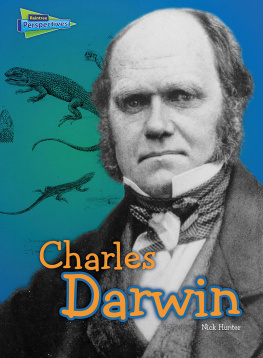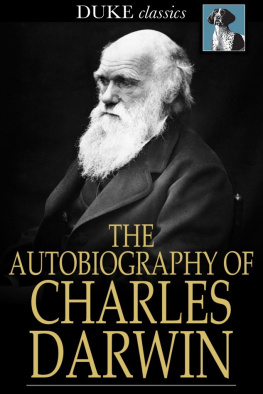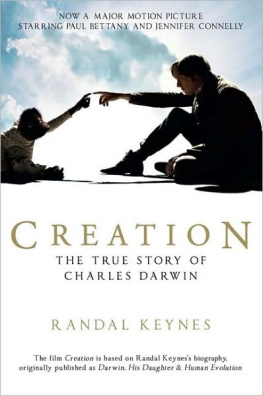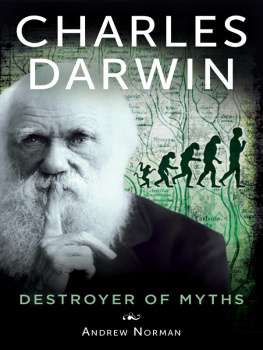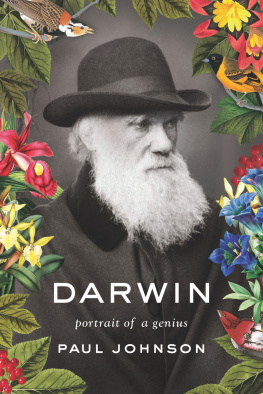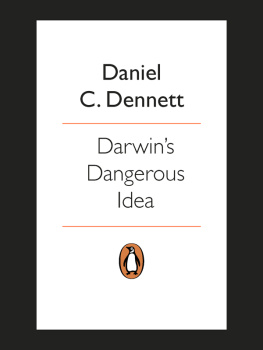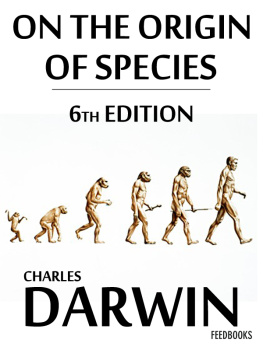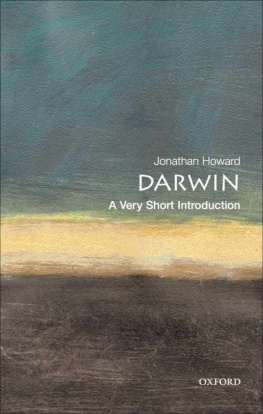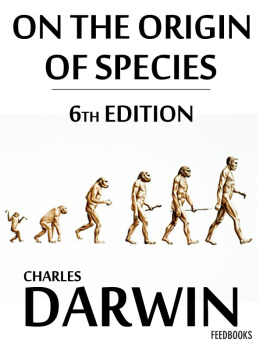DARWIN AND HIS CHILDREN
DARWIN AND HIS CHILDREN
His Other Legacy
TIM M. BERRA


Oxford University Press is a department of the University of Oxford.
It furthers the Universitys objective of excellence in research, scholarship,
and education by publishing worldwide.
Oxford New York
Auckland Cape Town Dar es Salaam Hong Kong Karachi
Kuala Lumpur Madrid Melbourne Mexico City Nairobi
New Delhi Shanghai Taipei Toronto
With offices in
Argentina Austria Brazil Chile Czech Republic France Greece
Guatemala Hungary Italy Japan Poland Portugal Singapore
South Korea Switzerland Thailand Turkey Ukraine Vietnam
Oxford is a registered trademark of Oxford University Press
in the UK and certain other countries.
Published in the United States of America by
Oxford University Press
198 Madison Avenue, New York, NY 10016
Oxford University Press 2013
All rights reserved. No part of this publication may be reproduced, stored in a retrieval system, or transmitted, in any form or by any means, without the prior permission in writing of Oxford University Press, or as expressly permitted by law, by license, or under terms agreed with the appropriate reproduction rights organization. Inquiries concerning reproduction outside the scope of the above should be sent to the Rights Department, Oxford University Press, at the address above.
You must not circulate this work in any other form
and you must impose this same condition on any acquirer.
Library of Congress Cataloging-in-Publication Data
Berra, Tim M., 1943
Darwin and his children: his other legacy / Tim M. Berra.
pages cm
Includes bibliographical references and index.
ISBN 9780199309443 (alk. paper)
1. Darwin, Charles, 18091882. 2. Darwin, Charles, 18091882
Family. 3. Darwin family. 4. NaturalistsEnglandBiography. 5. Evolution
(Biology) I. Title.
QH31.D2B474 2013
576.82dc23
2013003193
9 8 7 6 5 4 3 2 1
Printed in the United States of America
on acid-free paper
Dedicated to:
The Fulbright Program,
The Ohio State University,
The Museums and Art Galleries
of the Northern Territory, and
Charles Darwin University;
educational entities that have made
my career not only possible,
but also a great deal of fun.
CONTENTS
The name of the game in evolution is to get your genes into future generations (Berra 1990). Of course Charles Robert Darwin had no knowledge of modern genetics. Nevertheless, to that end Darwin and his wife, Emma ne Wedgwood Darwin, who was his first cousin, had 10 children. Three of these children, Anne Elizabeth, Mary Eleanor, and Charles Waring, died in childhood. One daughter, Elizabeth (Bessy), did not marry. The other six Darwin offspring had long-term marriages. Three of these marriages yielded no offspring (William Erasmus, Henrietta Emma ne Darwin Litchfield, and Leonard), while George, Francis, and Horace provided grandchildren.
I have been fascinated by the life of Darwin since reading The Voyage of the Beagle as a high school biology student, and I became interested in his children as I was doing research for my little volume Charles Darwin: The Concise Story of an Extraordinary Man. This led me to investigate the consanguineous marriages within the Darwin-Wedgwood families. My Spanish geneticist colleagues, Gonzalo Alvarez and Francisco C. Ceballos, and I showed that Darwins children were subject to a moderate level of inbreeding similar to any marriage between first cousins (Berra et al. 2010a). Furthermore, we showed a remarkable inbreeding depression for child survival in the Darwin-Wedgwood dynasty. A recent reanalysis of our data shows an important inbreeding depression for male fertility in a number of Darwin-Wedgwood marriages (Alvarez and Ceballos, personal communication). About 10 percent of the marriages in upper-class English society at that time were similarly consanguineous (Kuper 2009). We now know that susceptibility to bacterial infections, the cause of death for Anne and Charles Waring, (Lyons et al. 2009a, 2009b) and unexplained infertility (Golubovsky 2008) are considered possible consequences of consanguinity in Darwins children.
On the other hand, it was not all genetic doom and gloom. Three of Darwins children (the same three who left offspring: George, Francis, and Horace) were elected Fellows of the Royal Society for their scientific accomplishments and were knighted. This latter honor escaped Charles, as he was much too controversial for Queen Victorias taste, even though her husband, Prince Albert, supported Lord Palmerstons nomination of Charles for the Honors List in June 1859. The Bishop of Oxford, Samuel Wilberforce, effectively blocked the nomination (Desmond and Moore 1991).
Further investigation led to the rediscovery of a huge pedigree of the Galton-Darwin-Wedgwood families, with ancestors dating to the early 1600s, that was originally exhibited at the Third International Congress of Eugenics held at the American Museum of Natural History in 1932 (Berra et al. 2010b). A portion of this pedigree is reproduced on the front endpapers to serve as a scorecard for the players in the lineup of this book. The rear endpaper contains a map of the localities in the United Kingdom that are significant with regard to the various Darwin family members.
My interest in the Darwin children was further piqued when I was the keynote speaker at a Charles Darwin symposium celebrating the two-hundredth anniversary of his birth. This symposium was sponsored by Charles Darwin University and held at the Darwin Convention Centre in Darwin, Northern Territory, Australia, on 2224 September 2009. Just when I thought it could not get any more Darwin than that, I was informed that Charles Darwins great-great-grandson, Chris Darwin (great-grandson of George Darwin and grandson of William Darwin) was in the audience.
In addition to my day job as professor emeritus of Evolution, Ecology, and Organismal Biology at The Ohio State University, I am proud to say that I hold the titles of University Professorial Fellow at Charles Darwin University and Research Associate at the Museums and Art Galleries of the Northern Territory in Darwin, Australia. Charles Darwin is never far from my thoughts when I am in this most beautiful, tropical namesake city of Darwin.
The first chapter in the present volume is a brief overview of Charles Darwins life, accomplishments, and the paradigm shift his ideas induced. What then follows is a concise summary of each of Darwins childrens lives, which I have gleaned from published accounts. The life of the Darwin children growing up at Down House is familiar ground that has been plowed by the major Darwin biographers: Bowlby 1990; Desmond and Moore 1991; Browne 1995, 2002; Healey 2001; R. Keynes 2001; Colp 2008; Loy and Loy 2010; and others using the same sources, such as the version of Darwins Autobiography with previous omissions restored (Barlow 1958), The Correspondence of Charles Darwin (Burkhardt et al. 1985), The Life and Letters of Charles Darwin (F. Darwin 1887), Emma Darwin: A Century of Family Letters (H. Litchfield 1915), Period Piece (Raverat 1952), and the ever-useful Charles Darwin: A Companion (Freeman 1978). In a commemorative volume published on the one-hundredth anniversary of Darwins death, Freeman (1982) provided insights into the private lives of the Darwin family. No less a source than Darwins Bulldog himself, Thomas Henry Huxley, has written about the intellectual evolution of his friend and confidant (T. Huxley 1888). I have relied on these references, but I have chosen not to interrupt the flow of the narrative by continually inserting citations to these standard works at every factual statement. Rather, I have sprinkled them around to indicate where the reader can explore the topic further. Other specific references are cited where useful.
Next page

